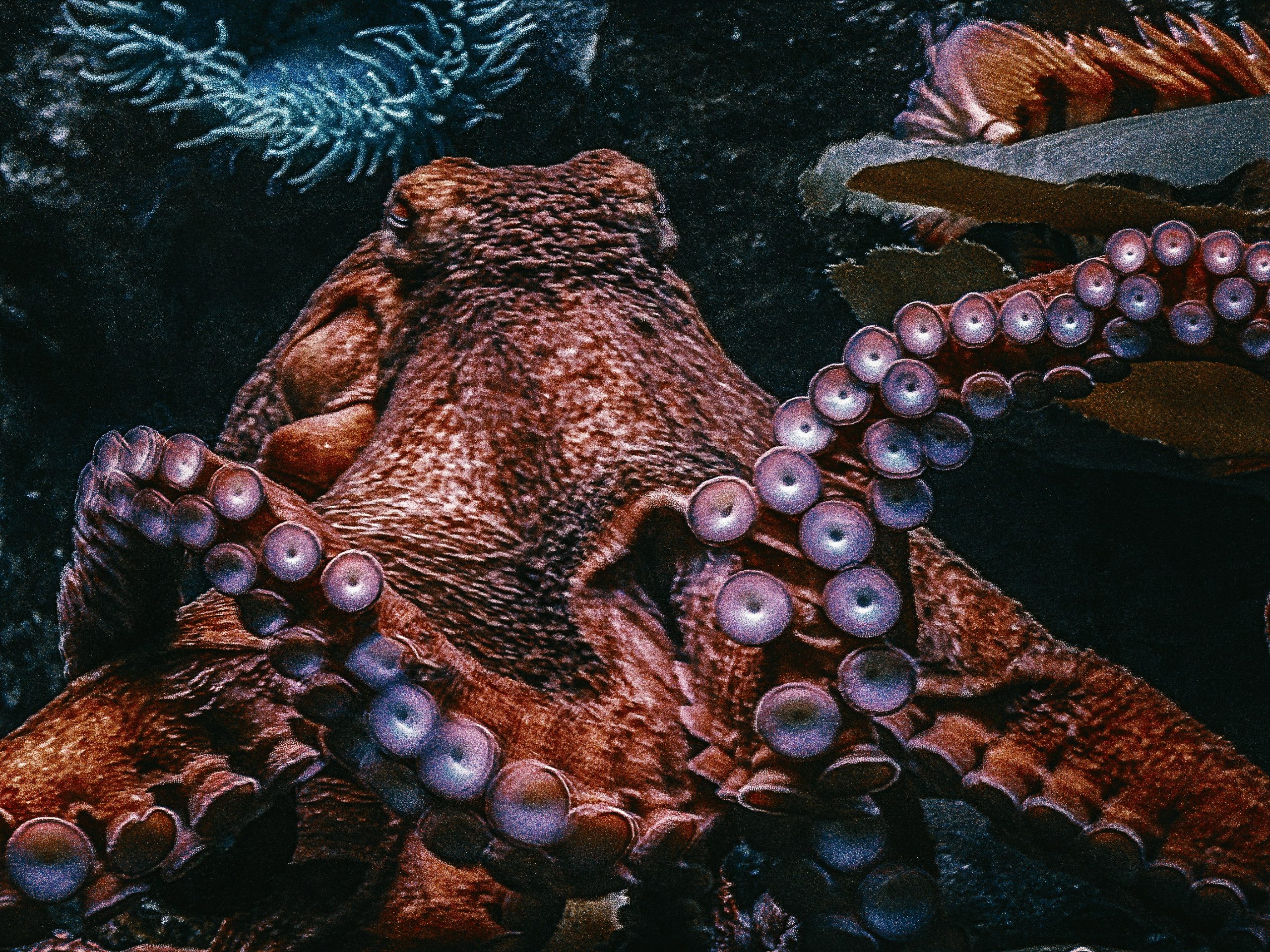Is determining animal consciousness the best way to minimise animal suffering at the hands of scientific research? Photo credit: K. Mitch Hodge via Unsplash
It is no secret that there are atrocities animals have endured at the expense of human research, driven both by medicine and curiosity. In the USA, 95% of animals subject to these experiments are not protected by the law. The recently introduced New York Declaration on Animal Consciousness aims to create some consensus on the topic of animals’ consciousness. This essentially broadens the scope of animals which are likely to be conscious, including invertebrates such as octopuses. While the declaration has been signed by an impressive 457 people to date, ranging from academics to members in the industry, many are not satisfied with it. The challenge is that while the declaration acknowledges, albeit sometimes in a limited sense, the consciousness of a large class of animals, it does little to encourage reform in experimental practices.
… 95% of animals subject to these experiments are not protected by the law.
In particular, the declaration does not recognise that actually proving an animal is conscious has historically involved invasive and harmful techniques. As noted by Dr Barbara King, ‘[Octopuses] flash not only colourful patterns of mimicry and camouflage on their skin, but also their moods. When subjected to unethical experiments—including the injection of acetic acid into octopuses’ bodies—they suffer pain.’
Dr Bill Lynn, on the other hand, addresses in an open letter the fact that, ironically, many signatories are themselves involved in research which studies the perception of pain in animals, which requires subjecting them to painful experiences, or holding animals in captivity. So, while many recognise the complexities of animal consciousness through research, almost as many change little in their research practice to reflect this.
…those that observe the animal in its natural habitat, offer a better, more humane alternative for studying consciousness.
Of course, it is easy to envision that the arguments might become nuanced. For example, we can ask whether such research, at the expense of a few, benefits the wider species by creating better understanding and thus, more empathy within standard practice. Counterarguments are as readily obtained. Researchers from PAN Works, a centre for ethics and policy concerned with the wellbeing of animals, suggest that non-invasive techniques, or those that observe the animal in its natural habitat, offer a better, more humane alternative for studying consciousness.
It is also natural to question how sound it is to use human-like behaviour as the gold standard of consciousness. As James Bridle put it in Ways of Being, ‘[w]here we start to move forward is when we learn to ask questions which are less concerned with “Are you like us?”, and more interested in “What is it like to be you?”. This is already apparent in the use of language in the declaration, which paints the ‘rich inner lives’ of animals always in relation to human characteristics. The declaration states, for example, that ‘bees show apparent play behaviour’, or that ‘fruit flies have active and quiet sleep—and social isolation disrupts their sleep patterns’.
…animals are likely to possess forms of intelligence to which we are oblivious…
However, animals are likely to possess forms of intelligence to which we are oblivious, so while studies of this type are important, the absence of human-like intelligence does not entail the absence of intelligence—a sentiment which Bridle also emphasises. For example, trees form a mycorrhizal network—connecting plant roots together with mycorrhizal fungi—and through this, send signals to communicate, amongst other things, potential threats. Although akin to our current World Wide Web, this is unlike any inherited form of human intelligence, and hints that fungi or animals may exhibit intelligent behaviours which our current definition does not encompass.
In the wake of these arguments, the extent to which the industry is reliant on pain-inducing testing must nevertheless be acknowledged: tens of millions of animals undergo experimentation related to drug development every year. The reduction of animal testing would require an alternative method or methods to be put in place. Another motivation for finding alternatives is the fact that only 5% of drugs tested on animals are given the green light to undergo human trials, making it rather inefficient.
One candidate is in vitro methods, which test products on lab-grown tissues, and which are believed to be scientifically superior to testing on animals because the experiment more closely mimics the conditions that would be present in a human body. Such methods will be particularly pioneering for testing adverse effects, and, although more expensive, the higher level of precision might offset that expense.
…the willingness to open up discourse surrounding the topic should be welcomed.
Although the contents of the declaration might be disappointing to many, the willingness to open up discourse surrounding the topic should be welcomed. The discussed pitfalls, which require overturning, or at least redirecting, an entire research field, are practically speaking quite difficult to implement. Morally speaking, though, an obvious question is whether acknowledging consciousness of an animal and yet not treating it as a conscious being is worse than not acknowledging consciousness in the first place.





